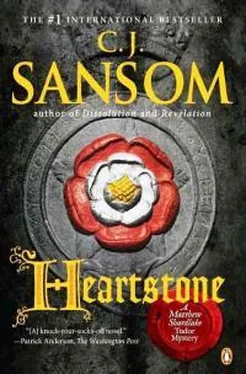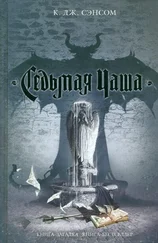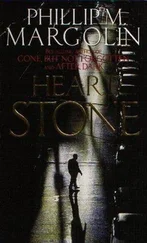I have invented the presence at Portsmouth of Richard Rich. The records show that he was not among the members of the Privy Council who accompanied Henry there. But his role in the financial organization of the invasion of France in 1544 is accurate, as are his loss of the post and the suspicion that he had been lining his pockets a little too heavily. However he remained on the Privy Council and his career was not affected.
Robert Warner was Queen Catherine Parr’s solicitor, and was used by her to defend a relative of one of the Queen’s servants accused of heresy in 1544.
IN 1526 Henry VIII and his first wife Catherine of Aragon did go on a summer Progress which took them to Petworth. Henry was by then in correspondence with Anne Boleyn; it was also probably in 1526 that he decided to divorce Catherine and marry Anne. However, the intercepted letter is fictional. It is true, though, that the Pope did later suggest that Catherine of Aragon resolve the problems raised by Henry’s desire for a divorce by going into a nunnery, and that she refused because she believed God’s wish was for her to stay married to Henry. If she had agreed, paradoxically, Henry’s split from Rome would probably never have happened.
THE ABUSE of the Court of Wards as a source of revenue, at great financial (to say nothing of emotional) cost to many of the children involved, was yet another scheme for extracting money from the populace devised by Henry VIII. The abuse of the court continued under Elizabeth I and James I and reached epic proportions under Charles I. Curbing its exploitation of minors was a major demand of Parliament in the years before the Civil War, and its abolition is one of the forgotten achievements of the English Republic of 1649-60. Such was public feeling that even the corrupt regime of the restored Charles II dared not bring it back.
WHILE THE STORY of Emma Curteys is entirely imaginary, there are numerous accounts stretching back through history of women who impersonated men and fought as soldiers, sometimes for years. For example there were several hundred documented cases on both sides in the American Civil War, where often the women were known as fighters of particular courage.
I am very grateful to the many people who have helped and advised me on this book. It took me into areas – particularly on the military and naval side – where my knowledge was sparse. I hope the finished product does at least some justice to the expertise of those who advised me; any errors are, of course, mine.
My agent Antony Topping first came up with the idea of a book set around the war of 1544-6. I am very grateful to him, once again, for his encouragement, and for reading and commenting on the manuscript. Thanks also to Maria Rejt for another marvellously skilled job of editing, to Liz Cowen for her painstaking copy-editing, and to Becky Smith for her typing. Michael Holmes advised me on naval aspects from the beginning, chauffeured me on visits to Portsmouth, and also read the first draft of the book, as did Roz Brody, Jan King and William Shaw. Once again, I am so grateful for all their shrewd insights. James Willoughby kindly translated the Court of Wards motto for me. Glennan Carnie of the English Warbow Society ( www.englishwarbowsociety.com) was very helpful on everything connected with archery – again, any mistakes are mine. Robyn Young kindly commented on the chapter dealing with the hunt at Hoyland Priory.
There is a huge amount of archaeological evidence about the warship Mary Rose , though documentary evidence about the sinking is rather thin. When it sank, one side was preserved in the silt at the bottom of the Solent; this was raised from the seabed in 1982. The divers also discovered, and have been bringing up ever since, hundreds of items ranging from cannon and longbows to clothing, shoes, and the personal possessions of those on board, as well as the remains of many of the unfortunate crew. I am very grateful to those at the Mary Rose Trust, where these items are preserved and displayed in Portsmouth, for taking time out to read the manuscript in draft, and for their comments and advice. My warm thanks to Rear-Admiral John Lippiett, Sally Tyrrell, Alex Hildred and Christopher Dobbs for all their help. I have made every effort to ensure that my portrayal of the Mary Rose and its crew is based on fact, and any errors are mine. My description of the ship, and particularly of the ship’s castles, which were never recovered, is based on Geoff Hunt’s beautiful painting of the Mary Rose , painted in 2009 for the 500th anniversary of the building of the ship.
The Mary Rose Museum is currently fundraising for a new museum, planned to open in 2012, which will feature both the half of the ship which was preserved and a reconstructed ‘mirror image’ of the other half of the ship, showing the artefacts in the places where they would have been. (Some of the soldiers’ possessions appear in this book.) This will provide a unique insight into the lives of the soldiers and sailors. More about current displays and activities, and future plans, can be found at www.maryrose.org.
Henry VIII’s Master of Horse, Sir Anthony Browne, who was at Portsmouth, commissioned a series of large paintings for his mansion at Cowdray House in Sussex, one of which was of the English encampment at Portsmouth in 1545. It shows the English and French fleets, together with the masts of the newly sunk Mary Rose just above the water. It is a very interesting painting, with the ships positioned extremely accurately, though the people on land would certainly have felt far less happy than they are shown in face of the huge invasion fleet; in that sense it is a work of propaganda. Henry VIII is also shown as far younger and slimmer than he was in 1545. Unfortunately the originals were lost when Cowdray House burned down in 1793, but a series of engravings of the paintings had been made, and survives. The engraving of the encampment at Portsmouth has been closely studied by Dr Dominic Fontana of Portsmouth University, who has also studied the Tudor town. I am very grateful to him for all his help and, again, for commenting on the manuscript. More about the Cowdray engravings, the sinking of the Mary Rose , and Tudor Portsmouth can be found at his website www.dominicfontana.co.uk.
The 1544 campaign in France is unusual in that a first-hand account was written by a Welsh officer, Elis Gruffudd: The Enterprises of Paris and Boulogne , trans. M. B. Davies (Cairo, 1944). Leacon’s account of the ravaging of the French countryside is based on his account. Tudor warfare often involved the spoliation of the civilian population, but usually as a by-product of the military campaigns. In 1544, however, Henry VIII specifically ordered the terrorization of civilians both in France and, especially, Scotland.
The town of Rolfswood is fictitious, as is Hoyland Priory, although its former mother house, Wherwell Priory, was real. Many former monastic establishments were sold off in the 1530s and far more in the 1540s, as noted, to raise money for Henry’s war. Jeremy Hodgkinson’s The Wealden Iron Industry (Stroud, 2009) was very useful on the iron industry, as was the display at Lewes Museum in Sussex. The fireback which Shardlake sees in Liphook can be seen at Lewes Museum. Roger Ascham’s Toxophilus remains in print (Lightning Source, UK). On archery, Richard Wadge’s Arrowstorm: the World of the Archer in the Hundred Years War (Staplehurst, 2007) was especially useful, as were, for the Mary Rose , Ann Stirland’s The Men of the Mary Rose: Raising the Dead (Stroud, 2005) and David Childs’s The Warship Mary Rose (London, 2007). J. J. Goring’s The Military Obligations of the English People , 1511-1558 (Ph.D. thesis, 1955) was invaluable on the recruitment of early Tudor armies. For the Court of Wards I consulted H. E. Bell, An Introduction to the History and Records of the Court of Wards and Liveries (Cambridge, 1953) and J. Hurstfield, The Queen’s Wards (London, 1958).
Читать дальше







![К Сэнсом - Стенание [другой перевод]](/books/432043/k-sensom-stenanie-drugoj-perevod-thumb.webp)

